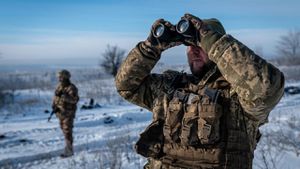Russia is currently entrenched in a complex web of military modernization and personnel challenges, exacerbated by the relentless conflict with Ukraine. With the aim of bolstering its armed forces to 1.5 million personnel, the Kremlin, led by President Vladimir Putin, has set ambitious goals intended to justify soaring military expenditures. Publicly announced on September 16, this target reflects the increasing urgency of rethinking Russia’s military structure due to mounting casualties and recruitment bottlenecks exacerbated by the protracted war.
For the Kremlin, this move isn't purely about numbers; it’s also about creating the political narrative necessary for sustaining military budgets well beyond the immediate conflict. Indeed, experts suggest the announcement ties closely to financial strategies, as larger military numbers can justify the anticipated increase to the defense budget for 2025-2026. Yet, the pressing question remains: can Russia genuinely expand its armed forces beyond mere paperwork?
The numbers would say yes, but the reality paints a far grimmer picture. While stable enrollment figures at military academies have remained consistent—around 60,000 students each year—there's still a glaring shortage of low- and mid-ranking officers. Military leadership has been experimenting with various recruitment tactics for years now, particularly since the late 2010s, but the dire manpower situation continues to stymie efforts.
Efforts to draw new officers from civil universities are underway, albeit with mixed success. Recent drives to recruit from existing ranks of contracted soldiers and non-commissioned officers have seen uptake, but tangible outcomes still leave much to be desired. What’s troubling, though, is the looming end of the current “partial mobilization” regime. Officer numbers are inflated due to this regime, with many officers prevented from retiring, creating temporary relief for leadership. Yet, once this mobilization ends, the officer corps could face significant attrition, leading to potential operational gaps.
While facing these recruitment dilemmas, the Russian military is also revamping educational strategies. An emphasis on creating military-driven curricula at younger age levels mirrors Soviet-era frameworks. Military training facilities for children have sprouted, indicating the Kremlin's long-term strategy to develop loyal citizens who can be mobilized swiftly, regardless of the severe limitations affixed to the military-industrial complex, particularly concerning technology and innovation.
During his recent meetings, Putin has underscored the importance of drone technology as part of the modernization initiative, emphasizing the need for unmanned aerial systems to bolster tactical capabilities. Discussions included the need for specialized systems capable of addressing contemporary battlefield needs efficiently. This focus is particularly relevant considering the rapid advancements made by Ukraine and NATO ally forces using similar technologies.
At the same time, reports reveal Russia's military training institutions are continuing to draw numbers at the academy level. Despite the war's severe toll on personnel, the applications to military universities appear steady, maybe even stable. Admission standards have been lowered, which could be one explanation for maintaining enrollment figures; they now fall below those of many civil universities. This ensures the continuity of officer recruitment but raises questions about the overall quality and preparedness of forthcoming graduates.
Looking at the future, the contradiction is evident. While Russia is pushing for greater military might on paper, the practicalities on the ground paint starkly different pictures. The need for manpower is urgent, yet the infrastructures are fragile. Moscow's ambitions are clear: to recapture its past glory, even if it means revisiting the tactics and models of the Soviet era.
What remains to be seen is whether the current initiatives, both tactical and educational, can adapt quickly enough to the volatile military scenario they currently face. The modern battlefield, characterized by technology and rapid deployment, demands adaptability—can the Russian military amend its historical practices to engage effectively with this new paradigm?
While academics and military experts dissect these developments, it is imperative to keep watching closely. The intertwining of military modernization goals with personnel challenges paints not only a nationalistic picture but also speaks volumes about the pressures facing Russian leadership. The outcome of these turning points could redefine security dynamics for not just Russia but its interactions with neighboring countries and global powers.



